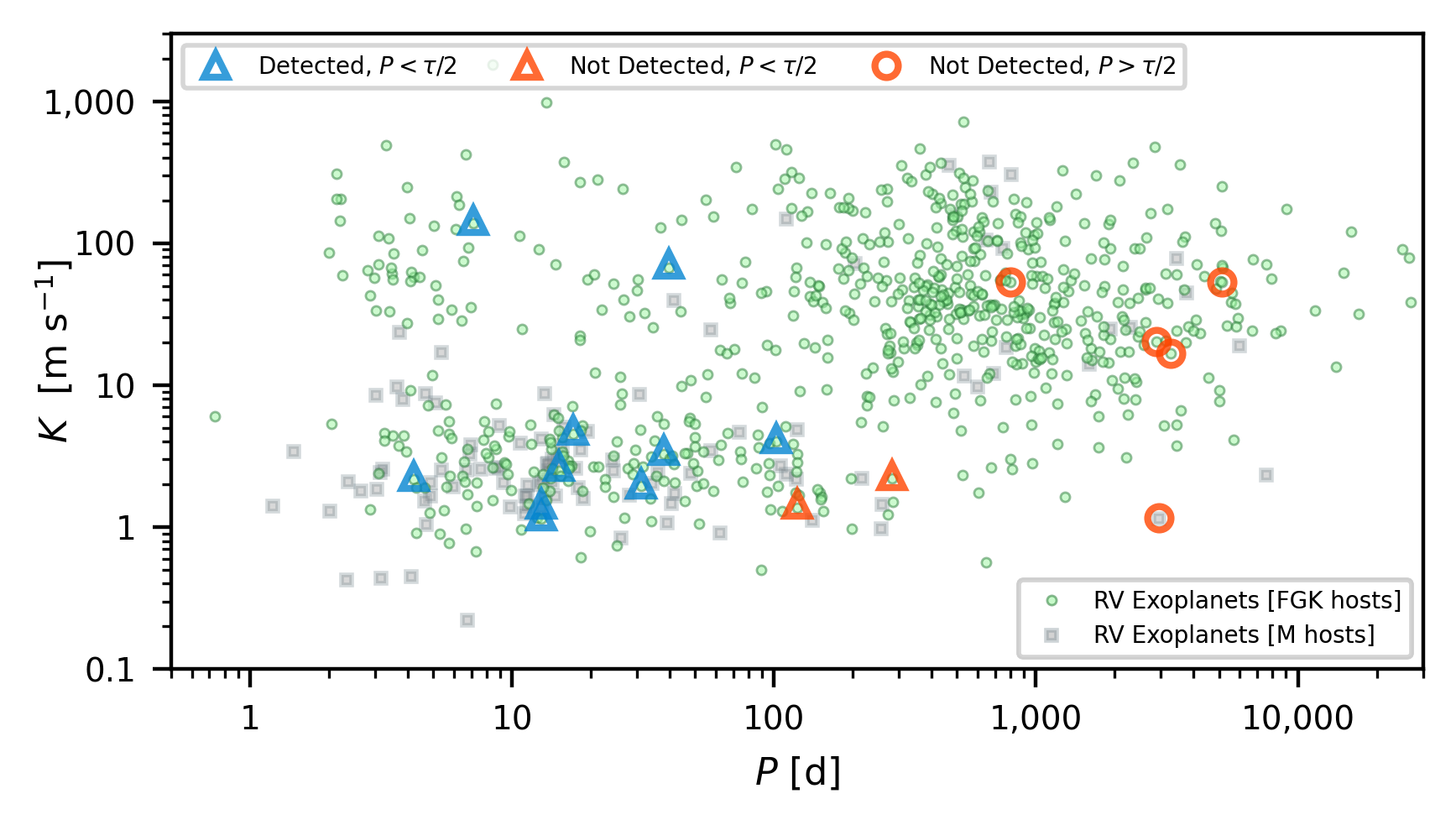
Searching for Earth Twins
A new generation of "extreme precision" radial velocity (EPRV) spectrographs, capable of measuring signals with sub-m s-1 stability, promises to facilitate the detection and characterization of new classes of exoplanets. Among these is NEID, which is on the WIYN 3.5-m telescope at Kitt Peak National Observatory. NEID supports a dedicated search for low-mass, long-period exoplanets, with a guaranteed allocation of 30 nights per year for 5 years. I helped commission NEID following its installation at Kitt Peak in 2019, and I now lead the design, execution, and analysis of our survey program -- the NEID Earth Twin Survey, or NETS.
The NETS target stars were selected using a set of quantiative prioritization metrics designed to maximize exoplanet discovery potential. These metrics, which boil down to selecting bright (and hence nearby) Sun-like stars with low levels of intrinsic RV variabilityis, are described in detail in Gupta et al. (2021) along with top-level observing strategies. Further, we adhere to a relatively algorithmic survey scheme for all targets, aiming to strike a balance between high-cadence observations, which facilitate stellar activity mitigation, and long-baseline observations to reduce aliasing effects.
Since its inception in 2021, the NEID Earth Twin Survey has been delivering a rich EPRV data set, which has proven fruitful for both exoplanet discovery and for improving our understanding of stellar variability mitigation. Our first planet discovery (HD 86728 b, on a 31-d orbit with K ~ 2 m/s) is described in Gupta et al. (2025a), and I provide a summary of the survey performance to date in Gupta et al. (2025b). Notably, we achieve sub-m s-1 long-term stability on multiple stars, and we find that NETS blindly recovers all known planets out to orbital periods of 100 days. Multiple papers detailing early results from the survey are forthcoming.

